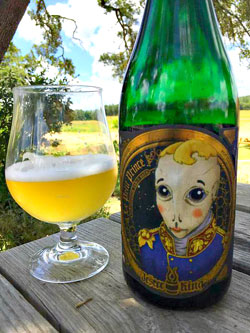MONDAY BEER LINKS, MUSING 06.22.15
Believe in featherbowling.
My favorite read of the week, maybe month. I’ll admit the beer connection is minimal, but the Cadiuex Cafe was an early outpost for flavorful beer in Detroit. Delightful on the cafe side, fascinating on the bowling side. [Via ESPN the Magazine]
Doom Bar and the Question of Origin.
The quick summary: the popular UK beer Doom Bar is brewed outside of Cornwall as well as in Cornwall, which is not what the brand’s owner Molson-Coors would have drinkers believe. Now that the cat’s out of the bag, Boak & Bailey write, what does that mean? Among other things they “suspect it will take months for most people to clock this news and, even then, many won’t care — it’s a popular beer which presumably sells to the trade at a competitive price and it’s still Cornish-ish, right?” I wish they weren’t right, but I figure they are. [Via Boak & Baley’s Beer Blog]
June Hop Acreage Report.
If You Drink It, They Will Grow: A Changing Landscape for Hops.
More on Hops: Prices and Future Growth.
Peak hop: Obsession with flavour may be dulling our beer palates.
Hops are giving you man boobs? Poppycock.
As I noted last week on Twitter, a few years ago hardly anybody beyond hop farmers paid attention to the USDA June Hop Report. That’s changed. Bart Watson of the Brewers Association analyzes it in depth (first link), the Bryan Roth goes deeper (next two). The fourth link isn’t about production, but beyond reminding us of the new interest in hops dredges up the notion that an obsession with hops keeps drinkers from exploring other flavors in beer. I disagree. The last link is to something I posted Friday, about the silly statement that hops give men man boobs. You’d be dead from alcoholism long before you could consume enough 8-prenylnaringenin to result in estrogenic effects.
Should I be drinking local or sustainable beer?
“Which is greener: beer brewed on wind energy that is trucked 1,000 miles to the consumer, or beer brewed on coal energy with minimal transport needed?” [Via Grist]
New Chinese Beer Saves Rhinos By Using Fake Rhino Horn.
Ingredient of the Week No. 1. [Via Eater]
Carrot craft beer is being brewed in Australia.
Ingredient of the Week No. 2. The beer is called Wabbit Season. [Via Mashable]
How Solid Are The Breweries In Your State?
“The question was which states have the breweries that have the most above-average beers, and which states have the breweries that make the most superlative beers.” Hop science I get, this I don’t. [Via BeerGraphs]
 Pardon the length, but I’m posting the entirety of the email that Jester King Brewery sent out yesterday. Thoughts after the message.
Pardon the length, but I’m posting the entirety of the email that Jester King Brewery sent out yesterday. Thoughts after the message. Reuben Gray has posted the roundup for The Session #100:
Reuben Gray has posted the roundup for The Session #100: